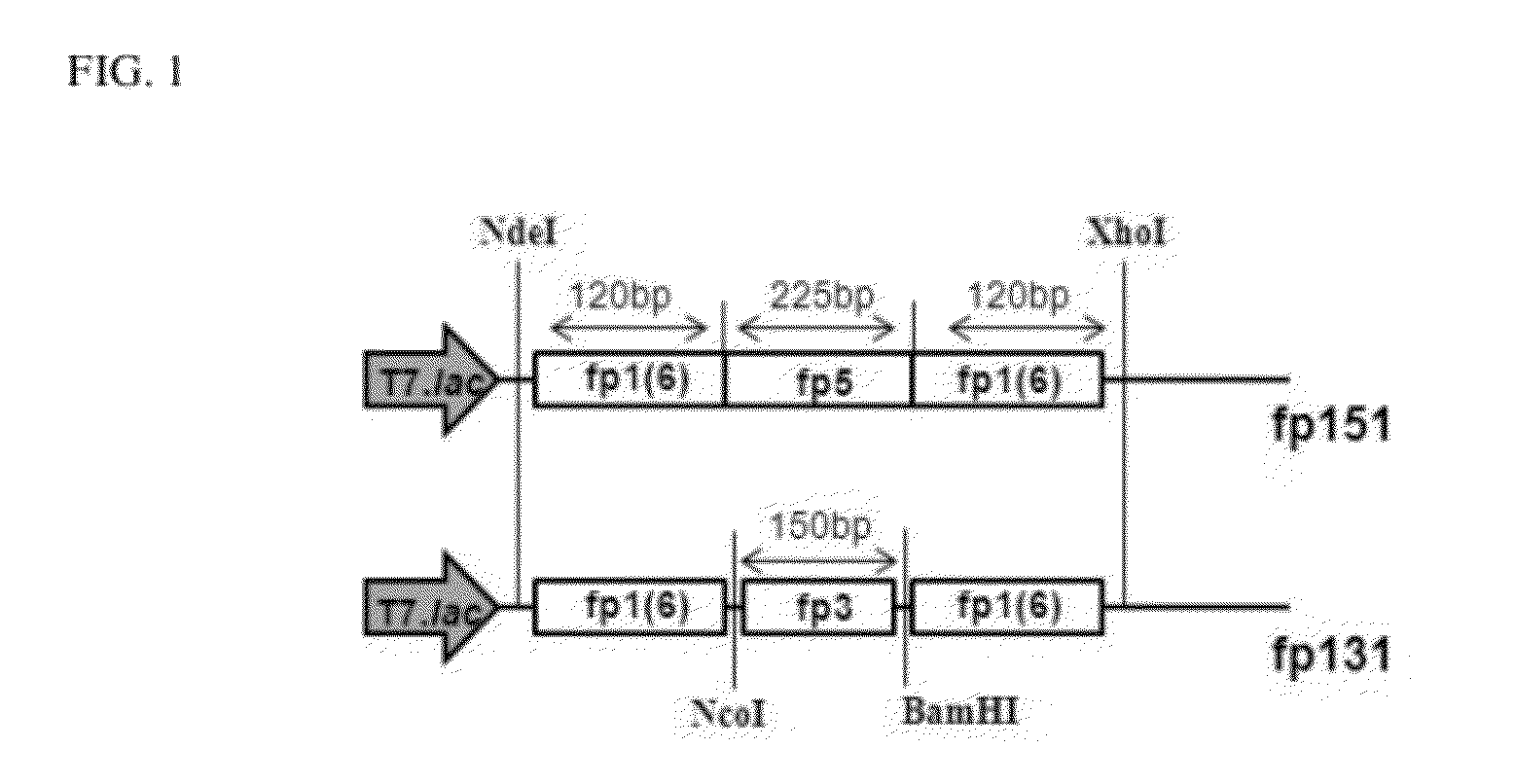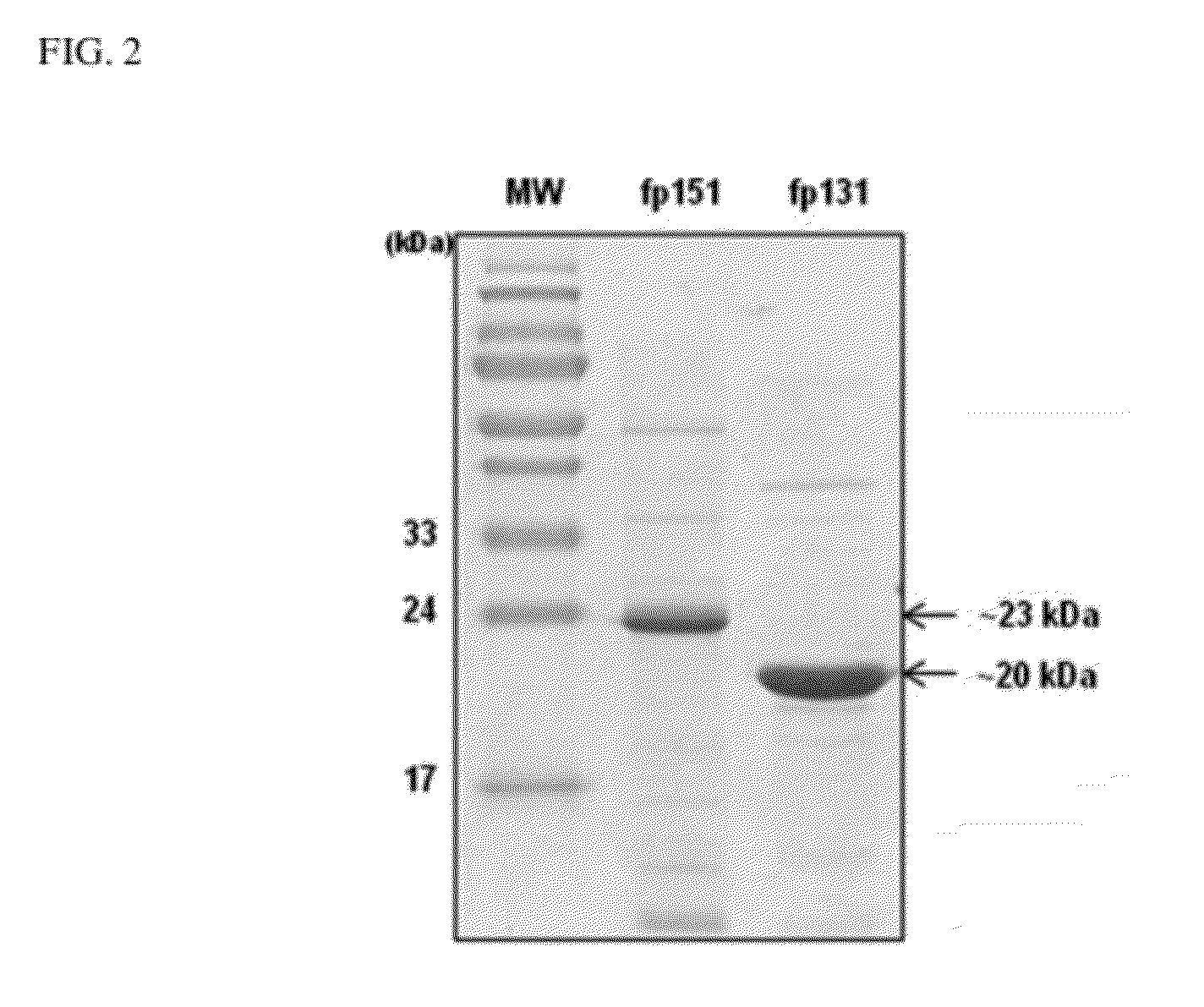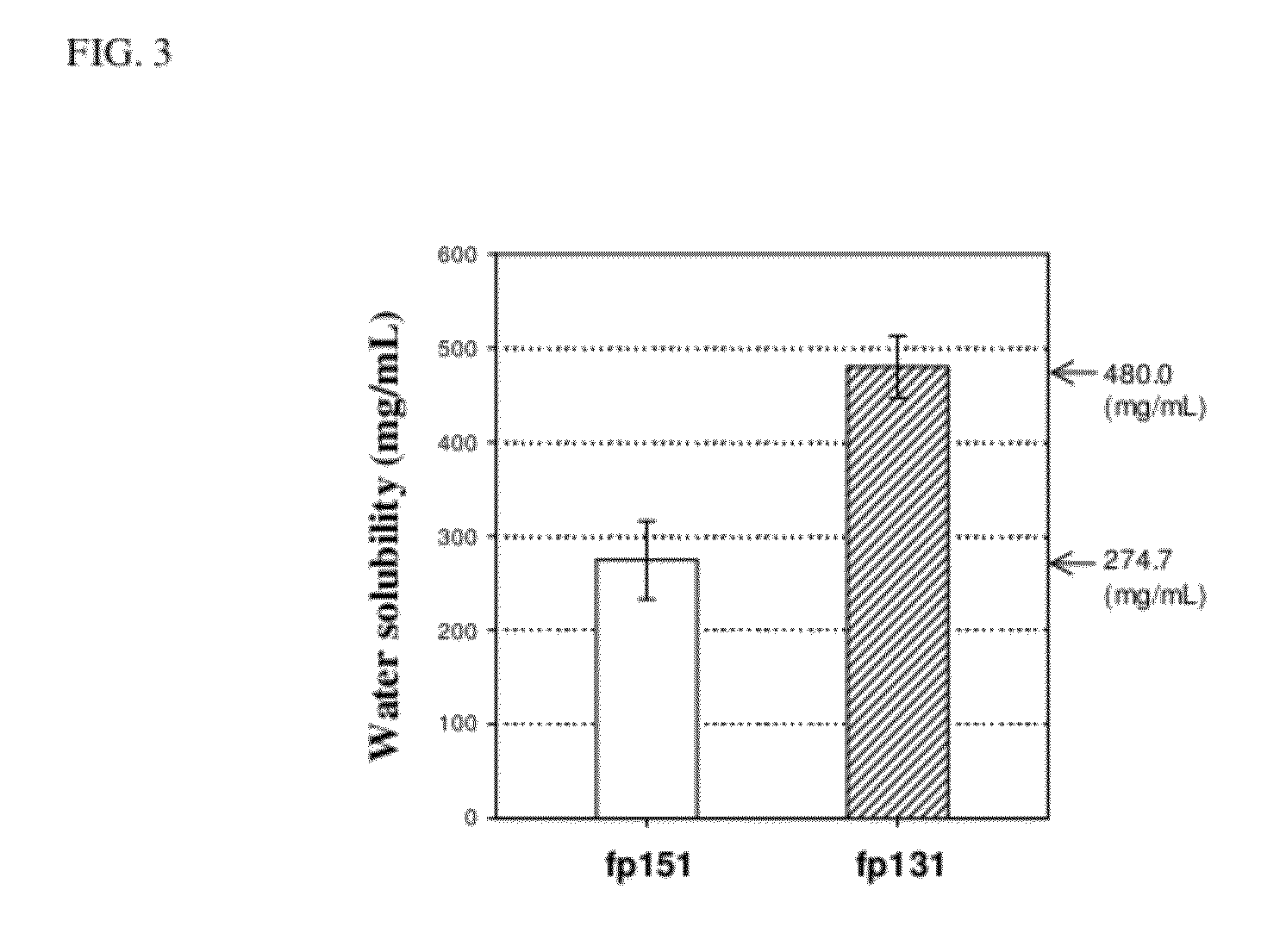Recombinant mussel adhesive protein fp-131
a technology of adhesive protein and recombinant protein, which is applied in the field of bioadhesives derived from mussels, can solve the problems of low protein yield, labor-intensive and inefficient natural extraction process, and failure to express functional and economical mussel adhesive proteins, so as to improve protein expression and improve physicochemical properties.
- Summary
- Abstract
- Description
- Claims
- Application Information
AI Technical Summary
Benefits of technology
Problems solved by technology
Method used
Image
Examples
example 1
Preparation of Mussel Adhesive Protein fp-151
[0059]The mussel adhesive protein fp-151 is composed of six fp-1 decapeptide repeats at both termini of fp-5, as described in WO2005 / 092920, the disclosure of which is incorporated herein by reference in its entirety. In the present invention, fp-151 gene was synthesized by GenScript Corporation (Centennial Ave., Piscataway, N.J. 08854, U.S.) with codon optimization for expression in host cells. The codon-optimized fp-151 was named fp-151-3.2, and the nucleotide sequences of the codon-optimized fp-151 is shown in SEQ ID NO: 12. The fp-151-3.2 was inserted into a pET22b(+) using NdeI and XhoI, so as to construct a pFP151-3.2.
example 2
Preparation of Mussel Adhesive Proteins fp-3 and fp-353
[0060]2-1. Preparation of Mussel Adhesive Protein fp-3 Variant A
[0061]The mussel adhesive protein fp-3 variant A (SEQ ID NO: 9) was prepared by modification of an adhesive protein fp-3A (Genbank No. BAB16314 or AB049579) that is derived from one of the mussels, Mytilus galloprovincialis, and designated as Mgfp-3A MUTANT in WO2006 / 1071831. The preparation method thereof is the same as in the above patent literature, the disclosure of which is incorporated herein by reference in its entirety.
[0062]Specifically, the fp-3 variant A gene was cloned to construct a pMDG03 vector containing the fp-3 variant A gene according to the methods of Examples 1 and 2 described in WO2006 / 1071831, and E. coli BL21 was transformed with the pMDG03 vector to prepare and culture a transformant E. coli BL21 / pMDG03 according to the method of Example 4 described in WO2006 / 1071831, and the fp-3 variant A protein was expressed and purified from the transfo...
example 3
Preparation of Mussel Adhesive Protein fp-131
[0066]The mussel adhesive protein fp-131 (SEQ ID NO: 8) was produced in E. coli by inserting the mussel adhesive protein fp-3 variant A gene between two fp-1 variant genes. The preparation method of fp-131 may be performed with reference to WO2005 / 092920 and WO2006 / 1071831, the disclosure of which is incorporated herein by reference in its entirety.
[0067]6×AKPSYPPTYK was attached to both the N- and C-termini of fp-3 variant A, so as to prepare a hybrid fp-131. Specifically, fp-151-3.2, a condon-optimized fp151, was inserted into a pET22b(+) using NdeI and XhoI, so as to construct a pFP151-3.2. fp1F in the pFP151-3.2 was amplified using a set of primers of SEQ ID NOs: 1 and 2, digested with NdeI / NcoI, and inserted into pET22b(+) digested with the same restriction enzymes so as to construct a pFP1F. Thereafter, the gene sequence of fp-3 variant A was amplified using a set of primers of SEQ ID NOs: 3 and 4, digested with NcoI / BamHI, and inse...
PUM
| Property | Measurement | Unit |
|---|---|---|
| concentration | aaaaa | aaaaa |
| optical density | aaaaa | aaaaa |
| pH | aaaaa | aaaaa |
Abstract
Description
Claims
Application Information
 Login to View More
Login to View More - R&D
- Intellectual Property
- Life Sciences
- Materials
- Tech Scout
- Unparalleled Data Quality
- Higher Quality Content
- 60% Fewer Hallucinations
Browse by: Latest US Patents, China's latest patents, Technical Efficacy Thesaurus, Application Domain, Technology Topic, Popular Technical Reports.
© 2025 PatSnap. All rights reserved.Legal|Privacy policy|Modern Slavery Act Transparency Statement|Sitemap|About US| Contact US: help@patsnap.com



